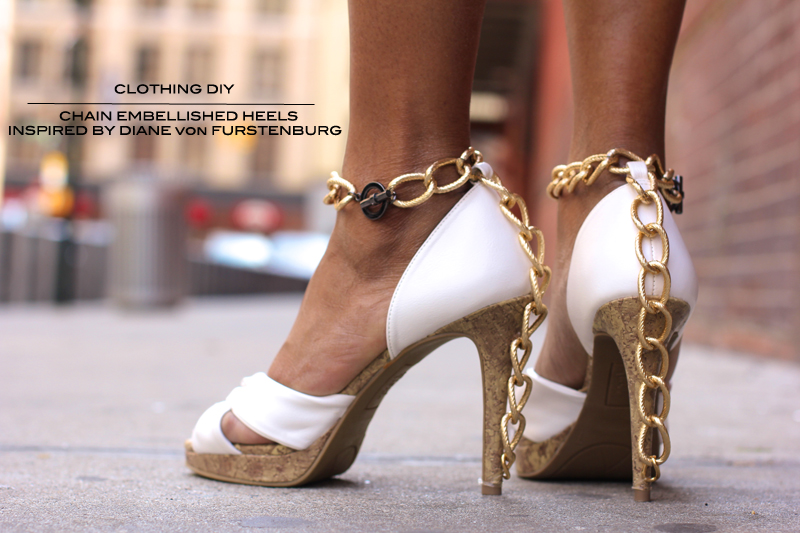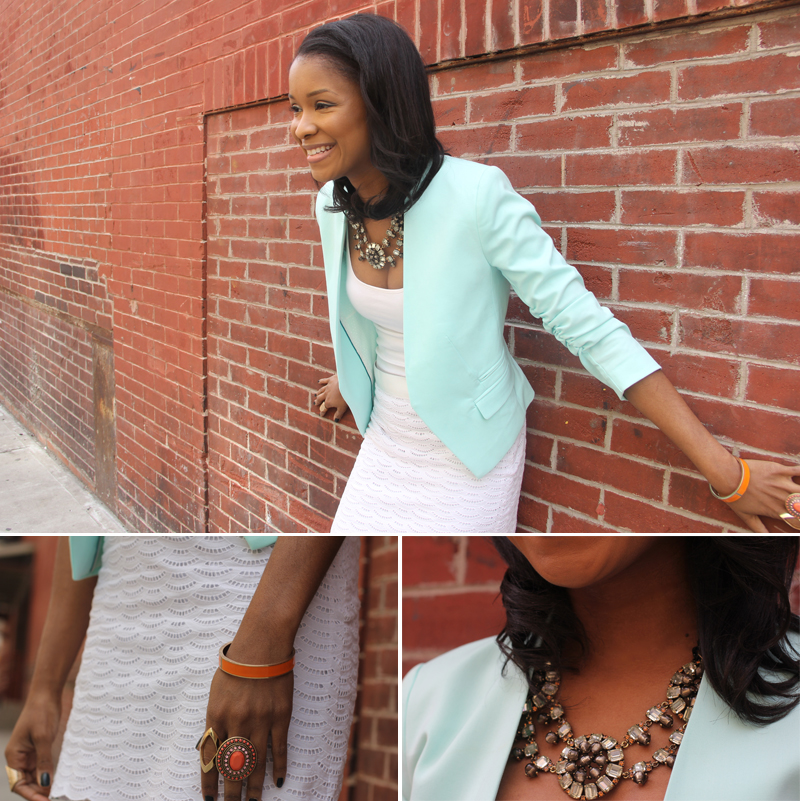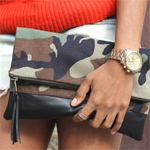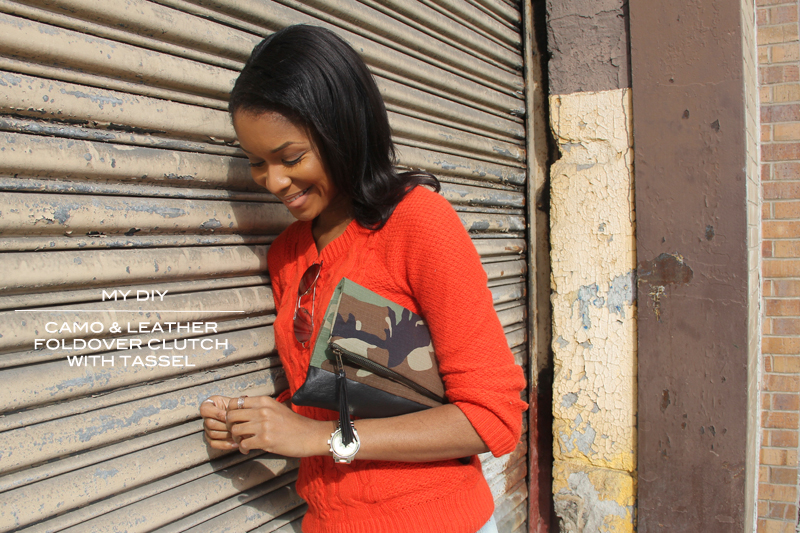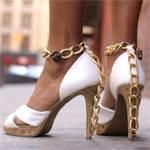 DIY
DIY
DIY: Chain Link Heels Inspired by DVF
So, I fell in love with these chain link heels from DVF from the moment I saw them. So I grabbed some secondhand shoes (which I got for $5 instead of $10 because they were missing an ankle strap — which I knew I wouldn’t need, but welcomed the discount) metal chain, closures, and glue and immediately got to work. This takes my heels from drab to fab in no time. Tell me what you think!
SUPPLIES: heels that once had an ankle strap, matches, large chain, smaller chain, 2 leather/metal closures, clear illusion cord, E6000 glue, wire cutters, and pliers.
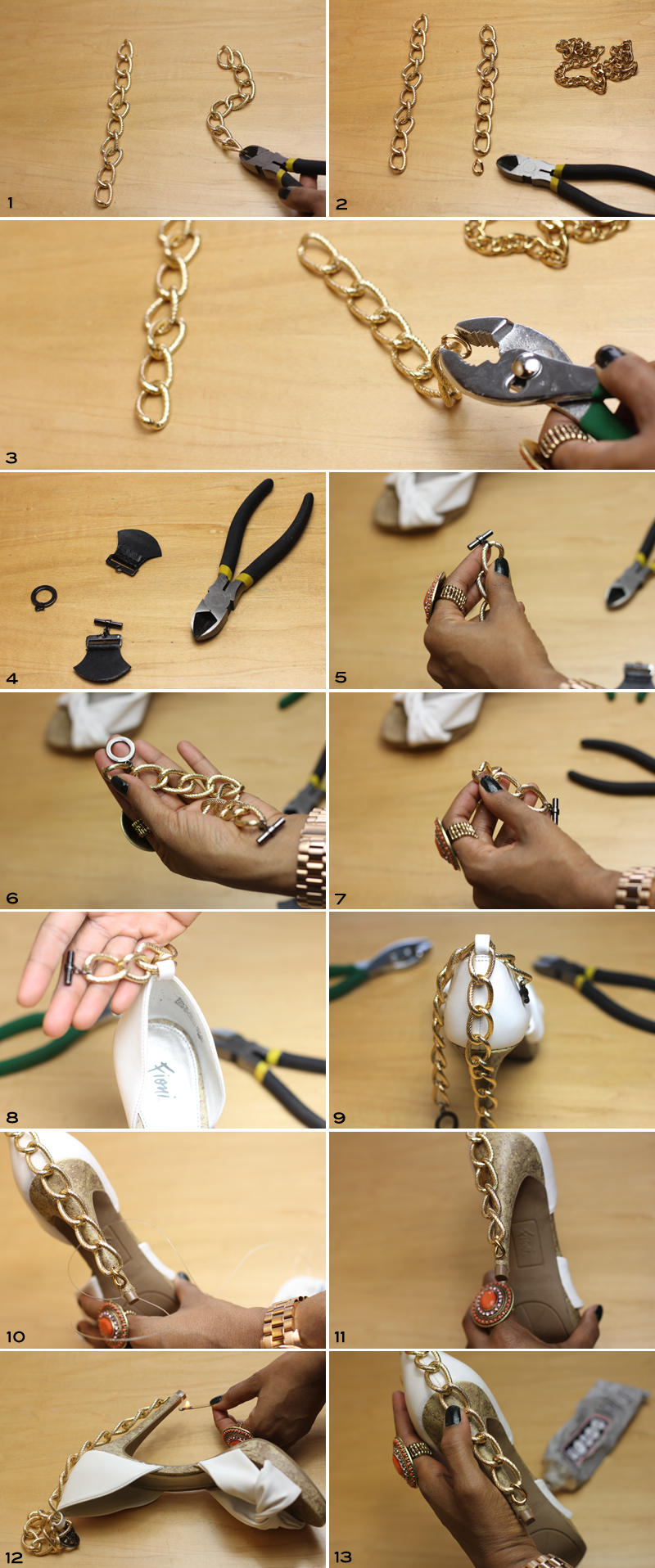
HOW-TO:
1. Go ahead and measure out how much chain you think you’ll need for your ankle strap (don’t forget to allow room for the metal toggle that will be attached. I used 10 large ones in total), and the chain that will go down the back of the heel (here I used 8) — use your wire cutters to pry the links open, and twist.
2. Remove one link from the smaller chains for the left and one for the right foot.
3. Add this one link to the base of each of the chains that trail down the back of the shoe.
4.Remove the 2 “toggle bars” and “loops” from the leather pieces. Be sure to keep the little rings attached that connect them to the leather, because you will use them in a second.
5. For the ankle strap (again, mine was 10 rings) attach the toggle bar by its ring to the chain (Note: If its for the right shoe, you will do the right side of the chain. We’ll start with the right foot).
6. Now add the loop via it’s connector ring to the left side of that chain.
7. For the right shoe, you will count in 3 rings from the toggle bar, and then pry open that link.
8. Slide this 3rd link onto the loop on the back of your heel, and close it back.
9. Next take your chain that is 8 links long (the one with the small ring at the base), and attach it to the loop on your shoe as well.
10. Pulling the chain really taught while keeping it straight, slip the clear illusion cord through the small ring at the bottom of the chain that goes down back of shoe. Wrap this cord around heel a couple times right above the shoe tap, and double knot it on the inside of the heel.
11. Cut off excess cord right near the knot you created.
12. Use a match to ever so slightly melt the knot at the base of the heel tap (Note: be really careful doing this or the cord will snap).
13. In the middle of the heel, place just a dab of glue just beneath the chain to hold it in place (Note: you can also add a tiny bit to the chain itself to keep it turned in the direction the desired direction). I also used a piece of string to tie it in place while the glue dried for about half hour.
